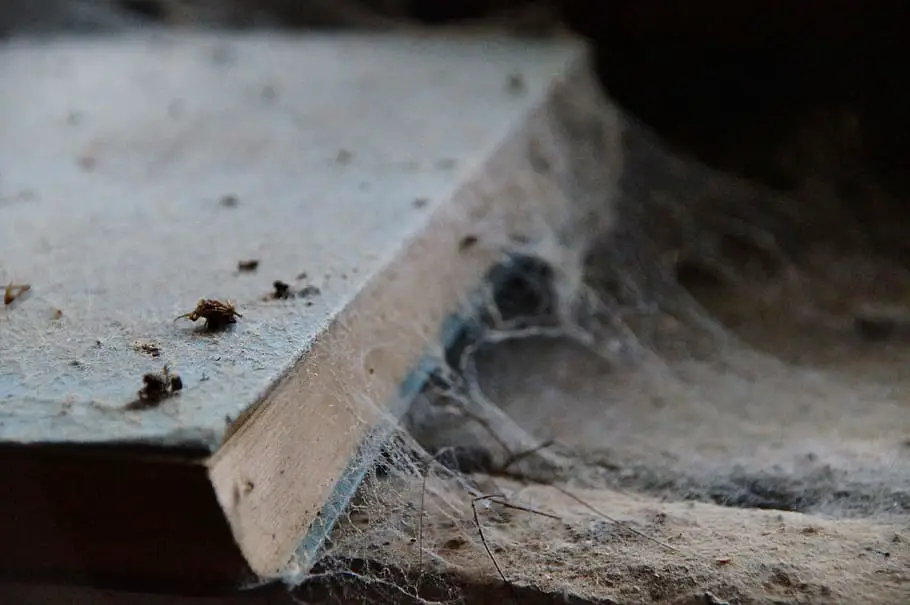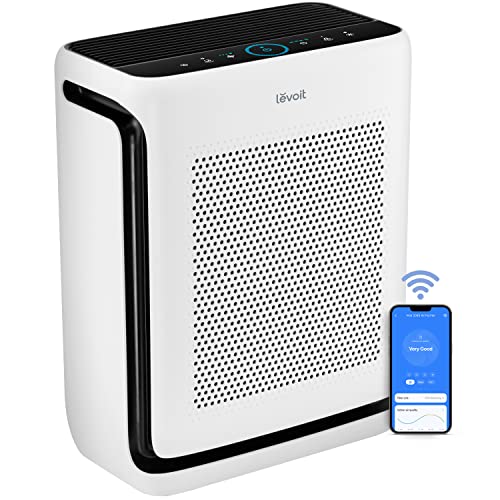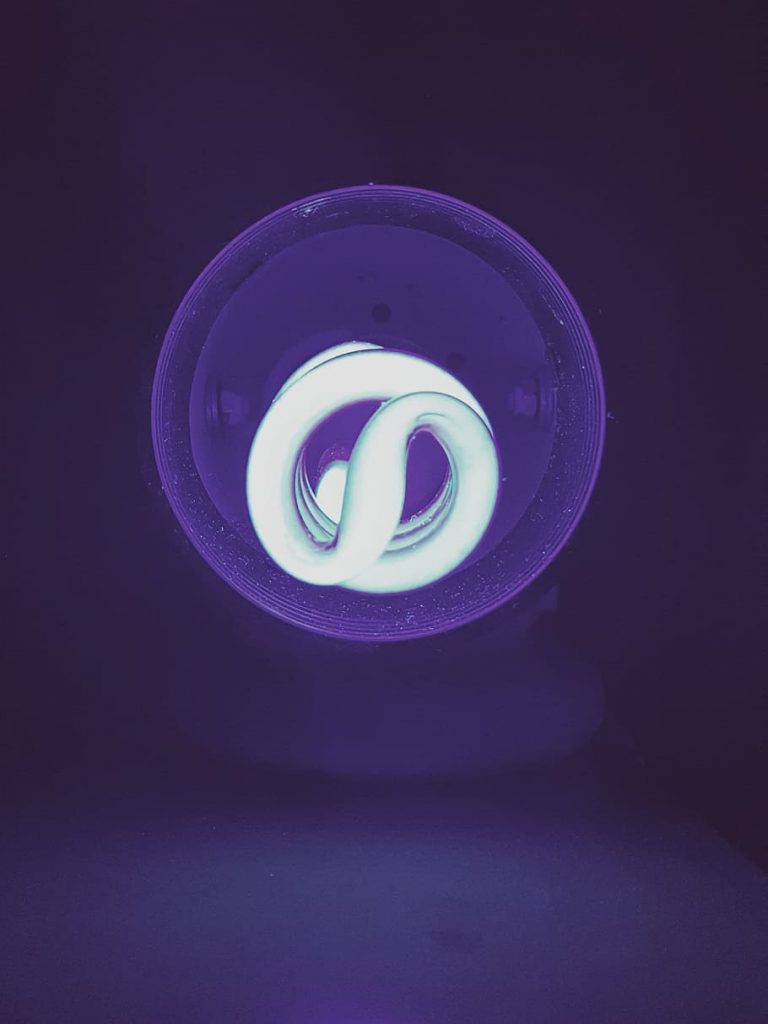Why is it the some air purifiers are said to emit ozone while other air purifiers claim to be ozone free?
Isn’t ozone dangerous to breathe?
Does it make a lot of sense that something that is supposed to clean your air would actually be making your air worse by introducing ozone into your breathing space?
These are just some of the questions you hear about ozone all the time?
Are you worried that your air purifier is unsafe?
Table of Contents
How to tell if your air purifier emits ozone?
- Ozone Smell
- Blue light
- Dusty surfaces
1. Ozone Smell
The main thing you’ll notice if your air purifier creates ozone is the smell. Ozone has a very distinctive smell comparable to bleach or antiseptic.
Most companies that sell ozone air purifiers market the smell as an after a thunderstorm freshness. You’ll have to be the judge of that for yourself. I think, personally the smell of ozone coming from a air purifier is quite a bit stronger than the freshness of a storm.
2. Blue light
If your air purifier has a blue light shining from it then you have a UV lamp. Ultraviolet light creates ozone as by-product. That doesn’t indicate in itself that there is a dangerous level of ozone being released. UV is used in all sorts of industries including the medical industry to eliminate germs and bacteria.
You have probably noticed a similar looking blue light shining in barbershops and fish tanks. For the same purpose, to kill bacteria.
3. Dusty surfaces
Does your air purifier and the surrounding surfaces gets extra dusty. If they do, it’s because your air purifier is creating negative ions that attach themselves to dust.
This causes the dust to become too heavy to float, so it falls to the surface. These machines are called Ionizers and they also create ozone as a byproduct.

There are several air cleaning technologies that create ozone as a means of cleaning the air or as a by-product.
Types of Ozone Air Purifiers
- Ionic
- Ultraviolet light
- Photocatalytic Oxidation
- Ozone Generator
Each one of these air purifiers is considered an electronic air cleaner that is filterless. In fact, it is being filterless that is the reason that most people purchase these types of air purifiers.
And Why Not?
The idea of being married to replacing filters in an air purifier for the entire life of the air purifier is not exactly tantalizing, and not exactly easy on your wallet.
1. Ionic air purifiers
Ionic air purifiers release ions into the air as a means of air cleaning.
The way this is accomplished is that The ions released from a ionic air purifier are negative. and the polarity of the ions that are considered air pollution or positive.
So when the negative ions that are released from the ion air purifier come in contact with the positive ions already in the air, they attach because of polarity.
The new particle that is created is too heavy to float and falls out of the ambient air. (The air that you breathe)
It’s actually very fascinating, But the problem is that a small amount of ozone is created in the process.
Most ionic air cleaners are built with a specific size area in mind. And the larger the area, The more ions that are released, which equates to more ozone being released.
That’s why the size of the air purifier should match the intended size of the room it is being used in.
But since there is no way to regulate how a air purifier is used , an ionic air purifier that that is made for a 1,000 ft² room would release entirely too much ozone if it were put into a 200 square foot room.
You might say that you need to be devoted to responsible air cleaning if you use this type of technology.
And shame on those companies selling air purifiers that create ozone without divulging that.
2. Ultraviolet Light
Ultraviolet light is a well-known way of destroying bacteria and germs. It is used in multiple industries for just that purpose.
As I mentioned before in this article you have probably seen a blue UV light shining somewhere in your everyday life.
barber shops put UV lights in their comb and scissor canisters to kill the germs on their tools between uses. Aquarium enthusiast use UV to kill germs inside of their fish tanks.
In my own life, I had a daughter that was born with something called Billy ribbon. The remedy was to place her under a UV light for a couple of hours a day till it was resolved.
UV or ultraviolet light has to be targeted And left in place in order to do its intended function which is to kill bacteria.
So when it comes to air purification, It typically means that it is placed above a filter in order to kill any bacteria that is being pulled into the filter by the air purifier.
And ultraviolet light does indeed release a small amount of ozone.
Another way that UV is used and air purification is to place a UV lamp above the coils and the drip pan inside of a HVAC unit. Another very cool method.
That is a way of using ultraviolet light to kill any mold before it has a chance of turning into spores and blowing through the vents and into your breathing space.
Another benefit from this process is that any ozone created in the process will have long dissipated before becoming part of the air you breathe.
3. Photocatalytic Oxidation
Only a few years ago, photo catalytic oxidation was one of the most popular air purifying technologies available.
It seemed like almost every air purifier had a type of photo catalytic oxidation module included.
But I guess with the wave of ozone fears and danger shouting, It finally became unpopular to promote PCO. (photo catalytic oxidation)
PCO air purifiers are easily one of the best ways of eliminating germs and bacteria from your air.
Air purifier companies like Air Oasis provided loads of test showing how the technology could eliminate up to 99% of mold spores, viruses, and bacteria.
The technology creates super ion oxides through combining ultraviolet light and titanium oxide.
This type of air purifying technology is much less popular these days, And most of the PCO air purifiers available these days are diluted to the point that you do not get the same results as yesteryear.
But some companies are still making full strength PCO induct air purifiers that are well worth looking into.
REME Halo in-Duct Model – Click Here to Purchase
4. Ozone Generators
These are machines that create ozone as a means of destroying germs and bacteria and almost anything else that is in the room with it.
Ozone generators are very popular for home abatement and known for their ability to get the smell of cigarette smoke out of smokers vehicle or a home that is been occupied by smokers.
The main thing with ozone generators is they are not meant to be used In the vicinity of people or pets. Plants included.
Also any room or vehicle that has had an ozone generator used in it should allow a few hours after use for the ozone to dissipate from the area.
Is Ozone dangerous?
Yes. Ozone can be dangerous to breathe.
Because ozone basically oxidizes anything that it comes in contact with, it will also oxidize your lung tissue if you breathe too much of it.
No one is arguing this point.
So….
The first rule of using a ozone generator is that it is not to be used in the vicinity of people, pets, or plants.
The area should not only be cleared out when the ozonator is in use,
You should also allow for the ozone to clear out a good hour before reusing the area.
Ok…
But that’s for using a ozone generator that is specifically meant to pump in large amounts of ozone.
What about air purifiers like ionic air purifiers that create ozone as a byproduct?
The federal limit for ozone is .05 parts per million. That is the limit did they say is still acceptable to breathe.
And to be fair, if every company that sold ozone generators as as household air cleaners, had abided by the law in the first place, than the fear of having an air purifier that creates ozone as a by-product would not exist. And don’t forget all the companies that hide behind the “Federal Limit” disclaimer and don’t divulge anything.
So then… If you have an air purifier that you feel like creates too much ozone, then why not simply apply the number one rule given for ozone generators.
Don’t use it when they are people in the vicinity and give it plenty of time to dissipate.
Ozone is remarkably good at getting rid of indoor air contaminants, especially germs and bacteria.
so why throw out the baby with the bathwater?
Why not use a timer and run it when you or out of the house?
 Not to worry…
Not to worry…
If you are still not sure, you can still have clean air without ever coming in contact or breathing in Ozone.
Not all air purifiers use ozone or create ozone as a byproduct.
The largest sector of air purification relies on HEPA filters and activated carbon.
Both or which very safe and do not introduce anything into the air that can be considered harmful in any way.
HEPA filters have the capacity to capture pollutants as small as .03 microns.
And for the indoor air pollution that is smaller than .03 microns such as gases and odors, these are air purifiers already equipped with activated Carbon.
 For consumers who do not want anything to do with ozone, this type of air purifier is very effective.
For consumers who do not want anything to do with ozone, this type of air purifier is very effective.
There are also many air purifiers the combine both filter and filterless technologies to get the best of both worlds. And there are many ways these technologies complement each other.
For instance, a UV light targeted right on your HEPA filter will help reduce the chance of live bacteria or mold growing on the filter.
Summary.
The easiest way to tell if your air purifier emits ozone is that it smells like antiseptic.
Other ways include a blue light shining from it, and the surfaces around the air purifier being extra dusty.
Ozone is very effective at eliminating indoor air contaminants but it also can be dangerous to breathe in large amounts.
One way to get the benefit of ozone as an air cleaner but not risk the danger of breathing it is to only run it when you’re going to be away a couple or few hours to allow the machine to function and then for the ozone to dissipate.
Not all air purifiers create ozone so if you do not want to have anything to do with ozone, you still have some good choices for air purification.



